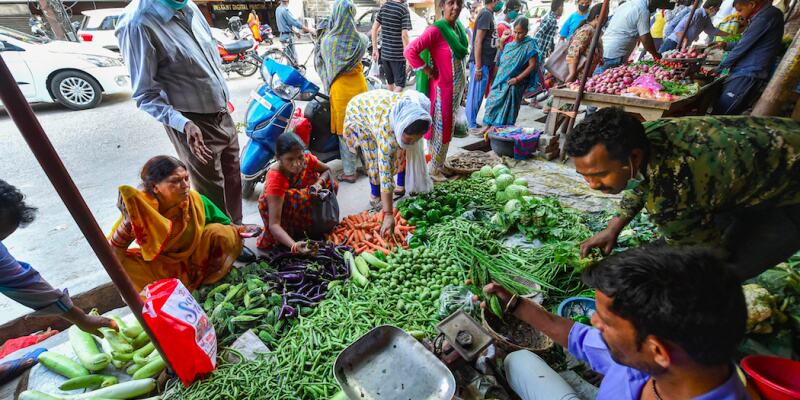A lingering problem

As per the data released by the National Statistical Office on Thursday, India's retail inflation sharply jumped from 6.9 per cent in March to 7.8 per cent in April — the highest since 2014, the year in which the BJP came to power in the Centre. Inflation in urban areas stood at 7.1 per cent while rural India witnessed sharp inflation at 8.4 per cent. This has been the fourth straight month in which the inflation figures breached the RBI's threshold inflation limit of 6 per cent and, as the estimates show, it is going to stay well above 6 per cent in the coming months. A simple breakdown would show that India's core inflation — excluding food and fuel prices — stood between 6.8 per cent and 7.1 per cent in April, as compared to between 6.3 per cent and 6.32 per cent in March. Since the sharp increase in headline retail inflation coincides with a proportionate uptick in core inflation figures, it can safely be deduced that the trend of food- and fuel-driven inflation continues unabated. The uncontrolled rise in food prices in India should worry the government as poverty and hunger are also on an upward trajectory. Notably, the rise in prices of food and beverages is largely driven by cereal and vegetable inflation — which rose from 11.6 per cent in March to 15.4 per cent in April. Despite easing down a bit, the price rise in oil and fat still stands at a whopping 17.28 per cent. Other common household items like clothing and footwear have also been witnessing a steep price rise. With the fuel and light sector also registering staggering inflation of 10.8 per cent, the transport sector has taken a deep hit. It goes without saying that fuel inflation has a pervasive cross-sector ripple effect that hardly spares any other sector. Though not as a reaction to April inflation numbers, the Finance Ministry averred that India has had a lesser impact on lower-income households in the country than on high-income ones — citing slow demand recovery in the economy. This unsubstantiated argument is difficult to explain as most of the commodities whose prices are rising remain as much a need for lower-income groups as for high-income groups. The Ministry also argued that India's condition on this front is not as bad as that of several advanced nations. While this argument is subject to criticism and analysis, it doesn't hold much importance. As a matter of fact, India, like many other countries, is witnessing economic distress. Acknowledging the problem and making all-out efforts to relieve those in distress should be the priority — both in words and action. Presenting a progress report under such circumstances may just be a futile act. India's economic prospects and vulnerabilities depend on its own strengths and weaknesses, and not on how other countries are faring in terms of controlling inflation. The severity of the problem almost came out bare when the Reserve Bank of India held an unscheduled meeting in May to hike policy rates by 40 bps, and in the upcoming MPC review meetings, it is set to vote for 40bps in June and 35 bps in August. RBI's monetary policy, however, will not suffice to tame inflation to the desired level. The current inflation is largely driven by supply-side constraints based on conditionalities like the Russia-Ukraine war and the pandemic. Sustainable recovery is possible only if these global problems subside. But, in immediate terms, the government can intervene to ease off the price burden from the shoulders of the poor and distressed. Among food and beverages, cereals remain the main drivers of food inflation. In the trying times, we are forced into; the government should consider balancing export ambitions and domestic needs. The government should also consider cutting down the excise duty on petrol and diesel to support the transport sector. The factors that are within the government's control will have to be handled well so as to maintain social, economic and political stability within the nation.



